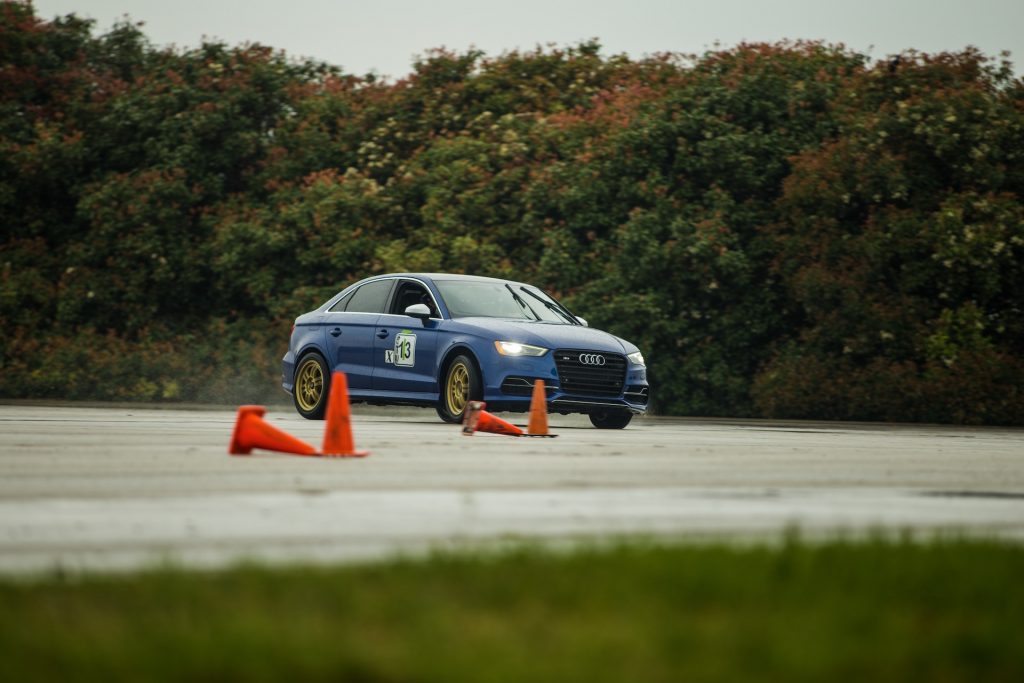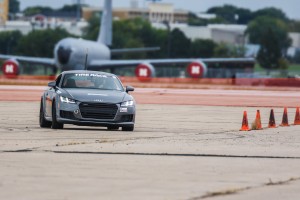Many people have heard about autocross but are not sure what it is or how to get started. Autocross is one of the easiest and cheapest way for a car enthusiast to take your vehicle on a driving skill contest. The only things you will need to participate is a driver’s license, a vehicle in good working order, helmet (yes, there are loaners available!), a desire to #havefunwithcars!

On paper, Autocrossing seems very simple – use traffic cones to make a mini-road course in a large parking lot or unused airport tarmac and see who can drive it the quickest without hitting any cones or going off course. In addition, Autocross events are driving skill contests that emphasize the driver’s ability and the car’s handling characteristics. While speeds are no greater than those normally encountered in legal highway driving, the combination of concentration and car feedback creates an experience that leaves many drivers with their heart racing and hands trembling from adrenaline after a run. The runs are timed down to a thousand of a second. Solo is the SCCA brand name for autocross competition.
With the fastest time often decided by a blink of an eye this low-cost, low-risk motorsport puts a premium on driving skills, and makes you feel like you’ve just set the land speed record. Competitors range from the casual participant who may use the same daily driver that they car-pool with to the hard-core driver who has a special car, special tires, and looks to squeak out every last fraction of a second.
How to get started?

A. Get Prepared
- Search for an autocross club in your region.
- Access SCCA.com and download the car class handbook to find your car class.
- Pre-register online for the next event or on site. Make sure you sign up in the novice group.
- Prepare your car by taking it for a full tune up and inspection. All fluids need to be topped off or replaced and the brake lines need to have good pressure. I would recommend to check:
- Oil level and age
- Brake pads and fluids
- Wheels are torque correctly
- Tire pressure and condition
- Fuel level
- Get a helmet and other essential tools (Not required but is a must)
- Helmet SA2015 Approved
- Chalk for your tires
- Tire Pressure Reader

B. Race Day
- Arrive early.
- Place your car class letters and race numbers in your vehicle. You can use painter’s tape, vinyl decals or magnets if you want to get fancy.
- Check your tire pressure. For stock tires I run them over 40 psi!
- Take your vehicle for inspection at the event. Remember to remove the floor mats and any loose objects inside the vehicle or trunk.
- Complete your registration on site.
- Walk the course with the novice group. During the walkthrough, learn how to read the cones and try memorizing the important sections only. No need to memorize the entire course.
- During execution, I would recommend you to do a few things:
- Ride with veterans on their vehicles as a passenger
- Get someone experienced to ride along with you
- Focus on not hitting the cones or getting out of the course
- Learn from your vehicle (how it reacts to acceleration, motion and braking)
C. After the Race
- Analyze your runs and learn from mistakes
If you want to drive your car to its fullest potential, improve your driving skills, and have #funwithcars join Audi Club Lone Star and your local Region SCCA for the upcoming Autocross events.
Spots are limited and fill up fast, register today!
For more information visit the following links:
http://www.houscca.com/autocross/getting-started/
https://www.scca.com/pages/i-want-to-autocross
https://www.scca.com/pages/autocross-glossary
http://farnorthracing.com/autocross_secrets12.html


